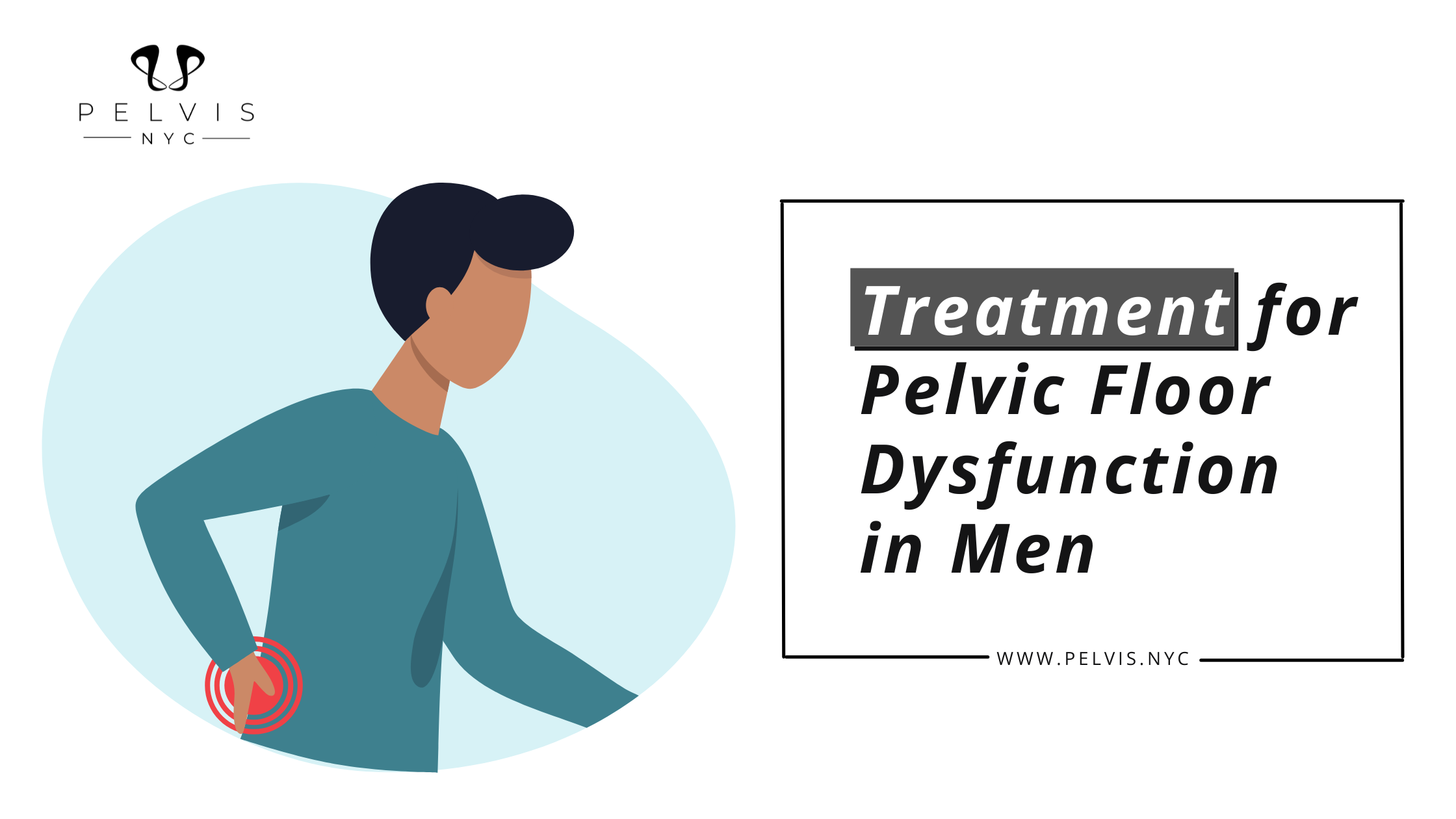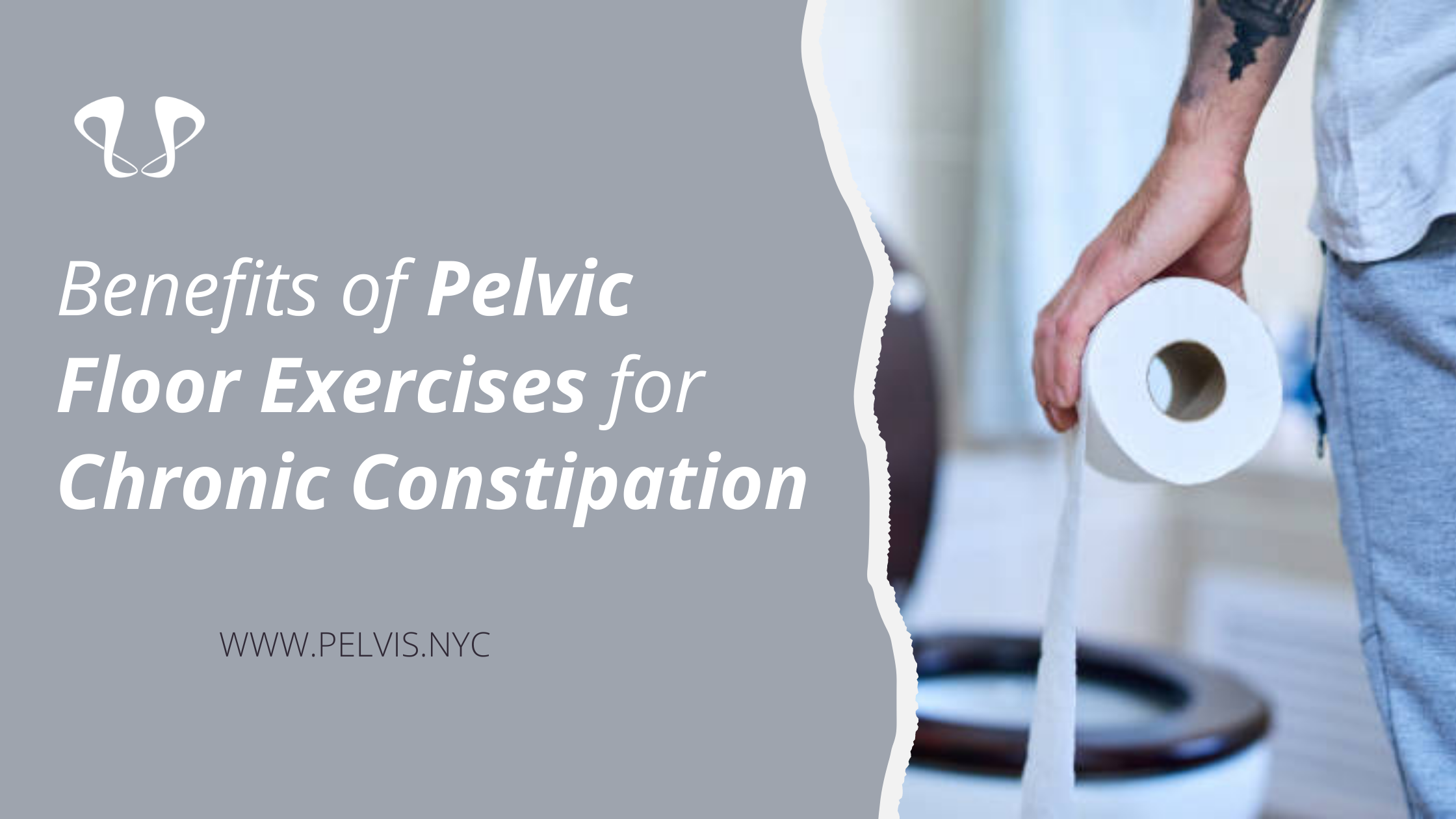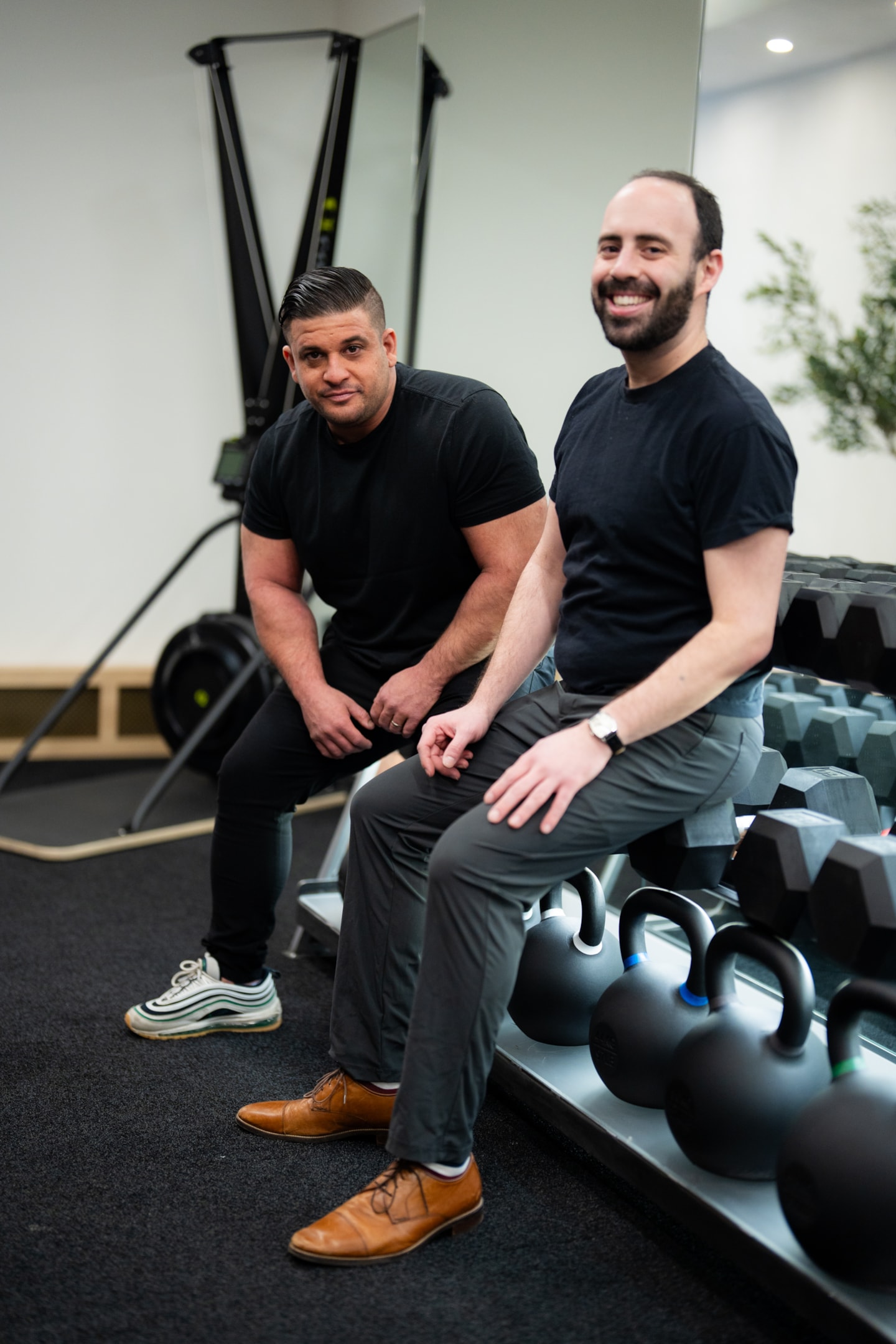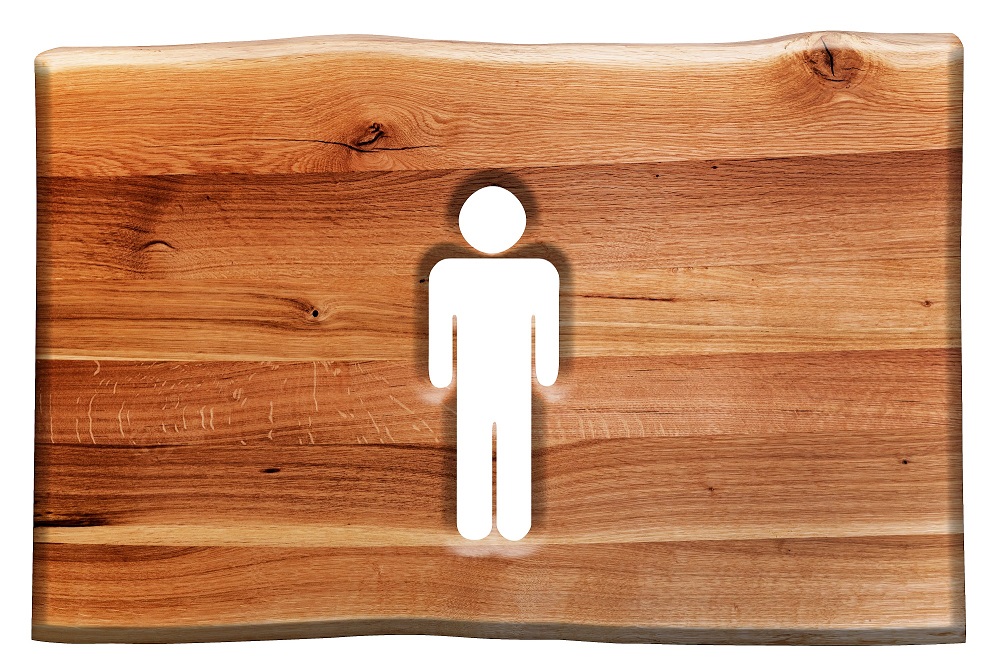Pelvic floor dysfunction affects more women than men, but MEN ARE AFFECTED TOO. Since most physiotherapists are focused on treating women, a lot of men are silently suffering, left untreated, misdiagnosed, and experiencing depression and anxiety. That is why a need with a Male Physiotherapist is essential.
In this interview between Simon Edward Smith of The Medical Journo on Youtube entitled Interview With Male Pelvic Specialist Dr. Adam Gvili, they have discussed below topics:
00:15 Can you explain a bit about what you do?
Dr. Adam Gvili: I’m a physiotherapist as you know, in the States, right I’m here in New York City & my specialty is the male pelvic floor. I hope to treat females one day, but I’d like to focus solely on males for now. I also treat orthopedically and treat a lot of athletes and I really enjoy treating in full spectrum. And the only population I don’t treat is pediatrics. Coz I think there are much better people out there that can focus on pediatrics than men.
So I treat a lot of females for orthopedic issues but I won’t treat them for the pelvic floor. Obviously, I’ll treat men for any issue.
Simon Edward Smith: “Right and this is based out of New York, you’ve got a clinic there?
Adam: Yeah right in Manhattan.
Simon: How long have you had that for?
Adam: About two years now.
01:40 Dr. Gvili’s experience with pelvic floor dysfunction
Adam: I don’t know how much you know about me. I myself went through pelvic floor dysfunction a couple of years back. Maybe ten years ago, at that time there was nobody out there to treat it. Really, in terms of men treating men. Right there were females treating it, but having a conversation like ‘hey you know when you pee at the urinal and you get this weird feeling, oh wait you don’t pee at the urinal right?’. And you can probably relate to this topic.
It’s like a weird dead end that I couldn’t complete a plan of care. But luckily I did meet a woman who is really familiar with male anatomy. I can give her a lot of kudos and I did learn from her. One of the reasons I started on my own, was because I was like there are no males treating males and guys don’t like to talk about their penis that much and that is the truth.
Simon: Yeah so what are your experiences in pelvic pain?
Adam: So luckily I only had some pain like an occasional shooting pain. Sometimes into the rectum maybe two seconds and it goes away. It was just a hypertonic pelvic floor. So as a patient, I had some issues like weird erectile dysfunction, premature ejaculation. Muscles are so tight that it is constantly contracting around my prostate. And it’s almost a borderline persistent general arousal disorder.
And I remember the third physical therapy session got better. It pushes the right buttons so I think that was what it was.
03:18 Dr. Gvili’s treatment of his pelvic pain
Simon: What would you do in a physiotherapy session to recover so quickly?
Adam: So we didn’t do much movement base stuff which is kinda I think what is needed to speed up the process but what I did appreciate was this certain individual did a lot of internal and that’s part of my practice as well. I do a lot of internal. I’m gonna kick that taboo on the side. Guys treating guys.
I think even orthopedic clients need that therapy with touch to get that therapeutic effect right. I need to tone down your system. If that is the case, most of my guys have had a hypertonic pelvic floor. I treat mostly an average of 20 to 40, we had the outliers but I used it to tone down the system first before trying to get you engaged or to believe that this is gonna work. Because by the time you’ve gotten to me, you’ve seen so many practitioners that have run you down some rabbit hole. Googling and thinking that you have a terminal disease so I have to calm you down a bit and the way to do that is by internal.
04:31 The taboo over male-treating-male treatment
Simon: You said that there was a taboo with men treating men. Do you find that in the US then?
Adam: Totally! And it’s funny! Because when you speak to practitioners in the UK and Australia who are light years ahead of the US. We’re practitioners and we’re here to get people better and that’s our goal. And that has nothing to do with gender. But for some reason when you speak to people coming out of school or people that might be interested in specialties. They hear what you do and ‘oh I can never do that’ those were the usual answers that follow and you do get that a lot.
05:15 The influence of A Headache In The Pelvis
Simon: You’ve heard of a headache in the pelvis? Well, that’s all internal. Not all of it actually no that’s wrong but some of it is internal isn’t it. And that was crazy in the US. I was quite surprised that it is such a big book within the physiotherapy world. I’m surprised it’s not just common being accepted into the practice.
Adam: It’s such a big one in the physiotherapy practice.
Simon: It’s such a big-known book that I’m surprised that there is a bit of an issue around men treating men.
Adam: So it’s interesting I do give Dr. Wise a huge kudos because they kind of got this whole movement started. If you really think about it, especially for males. I’ve had a wand and I used it. I’m not the biggest fan of it. But I mean internals out there for some reasons it’s still a taboo right.
Like when I took my first men’s pelvic floor course. I remember it was a two or three-day course either way we spent a good two hours or an hour and a half talking about what you do in a situation where a guy gets an erection. So it was more geared towards women feeling comfortable treating men as opposed to just how do we diagnose and treat men. Even within the female kind of sector, there was a taboo here like oh what do we do right.
06:59 What name would you give to this condition?
Simon: What name would you give to this coz there’s a lot of debate of groups over what terminology people should use. But you know coming from actually from the field what would you call it?
Adam: Yeah it’s tricky because have you heard of sciatica?
Simon: Yeah that’s the nerve down the thigh.
Adam: Yeah it’s actually at the back of the leg.
Adam: Sciatica or it can be in your spine it could be coming along that pathway. Like pelvic pain, we have an umbrella term, we kinda branch out from there. So I don’t necessarily know if I would rename it because it depends on someone’s symptoms and it depends on it being a multi-fast issue we don’t know what’s going on. I think the biggest disservice we have done so far is diagnosing people with stuff we’re not sure they have.
Simon: Right, such as an inflamed prostate.
Adam: What the h*** does it even mean?
Adam: No seriously I’m a little more animated than your average physical therapist. But what the h*** does that even mean. I have a leading urologist in New York City referring me to clients. Thankfully, I’m very thankful for that. But how can I feel an inflamed prostate? You can’t feel if it’s baggy but can I tell if it’s really inflamed. I’ve touched many prostates. I don’t know if that’s necessarily true. Can I be honest? It could be wrong. Maybe I’m feeling but I’m telling you what I think. or I mean I have this theory that specifically in the US but I don’t know it is in the UK but we over medicalize here. We definitely over medicalize. We diagnose, the reason why we have to diagnose is so we get paid by the insurance
I never walk out of a doctor’s office saying we’re not really sure what it is just do this, and this. And we’re always looking for an answer for some reason. How do we know it’s necessarily the pelvic floor and it’s a hip issue? How do we know it’s not a low back issue? So many things can cause the said symptoms. That I think we do some disservice, let’s say it’s for sure like this when we don’t have enough research. Majority of those diagnoses that you’ve heard
09:42 The problem with giving it a name
Simon: Yeah! Cole Monahan mentions that giving a diagnosis can be a bit definitive and not really help the situation. Like you said that there are so many different symptoms coming from different places and it’s hard to classify them.
Adam: Totally! And then I’ve had people who have had a one-night stand and said it happens after that. I never had sex before and they tell me they have these symptoms. So when that happened the first time. That person came to me and said I’m actually a virgin. I’ve never had oral sex either. But I have these symptoms. That was like someone shot me in the head. Because I was like we thought to believe that this could potentially be something that changed your urethral or bladder flora.
Whoa, so I’m always at the question mark and I think that it’s the exciting part about treating the pelvic floor that constantly comes up.
10:44 Issues around internal treatment and trigger points
Simon: So I really want to ask what this internal treatment is? Do you say you’re not a massive fan of the wand? Is that because there are few different types? Is that the easy one, the magic wand?
Adam: It’s kind of like an S-shape. Like a small S shape. I’m not the biggest fan because… to go and search for trigger points, I don’t know how helpful that is. Also unless you’re sort of a Marvel DC Comic character when you have a long arm, or you actually can make it to put it in your butt. You might have a problem kind of relaxing certain muscles because you’re utilizing them in order to contract them to a certain position right.
Well that being said I’ll never tell someone not to do something. In most cases, I won’t say no to do something. So if that makes you feel better, do it.
Simon: So you’re using your finger then?
Adam: Yeah we use gloves.
Simon: You’re using your finger like a wand basically?
Adam: So am I looking for a trigger point or not? I have people that seem that don’t have that much tension in their pelvic floor but they go through all the gamma symptoms and everyone who does, has a high torn pelvic floor. So I’m not necessarily looking for trigger points. But something that says that I’m in the right area right. Especially the first session which is evaluation. I go around and try different things and I’ll tell my clients to text me the next two or three days and then I have a log two-three days and another two-three days until they come in. and we’ll see if that did work and we’ll stick with that a little bit and then when we are at the point where we’re stagnating then maybe we’ll switch to something else.
12:47 Individual treatment for clients
Simon: So what are these? Are you telling them to stretch? Or do they do the massage and set the internal massage themselves? What is it? Or just a combination of different methods?
Adam: Yeah, I don’t have cookie-cutter treatment. If it takes someone with a really high tone pelvic floor that kinda sits all day, and doesn’t move much. They would do really well, just kind of going out for a walk starting slow, deep squats. My favorite is deep squatting in your bathtub. I don’t know in the UK if you have traditional bathtubs, not sure if you do. Curve the edges on the side.
So you can deep squat with your back with supported heels down that curved the edges will further push you to the hip flexion. So what you’ll get is the opening of that perineum and adductor fascia. That’s my favorite kind of talk of almost everyone on their first visit just to see if we get a change because that is what we are looking for right. An active change.
Simon: It’s funny you say that. Because that is the position that I would do. The wand, that’s the exact position that is really helpful. That deep squat just pulls everything open. You can feel like releasing… come open… so I can certainly associate with that.
Based on the above conversations, we can feel how passionate Dr. Adam Gvili is in treating male pelvic floor disorders and how he works with them closely to improve their symptoms and normalize their pelvic floor.
Do you want to know more about a male physiotherapist and how Dr. Gvili treats his patients? Want to learn more tips and advice from an expert who experienced pelvic floor disorder himself? Watch out for our next blog.
Related Blogs: Physical Therapy for Men: FAQs Answered and Guide to Physical Therapy: What You Need to Know














